Articles
- Drama developments
- Mystery and morality plays
- The earliest permanent theatres
- Elizabethan and Jacobean theatre design
- Female roles before 1660
- Restoration theatre
- Commedia dell’Arte
- Eighteenth century theatre
- Nineteenth century melodrama
- Naturalism and realism
- Twentieth century experiments
- Later twentieth century theatre
- Literary features of Elizabethan drama
Restoration theatre
Historical background
The puritan Commonwealth
Between 1642 and 1660, following the English Civil War and the trial and execution of King Charles I, England became a republic. It was ruled by Parliament and a Council of State under the leadership of Oliver Cromwell, a puritan army officer who was declared Lord Protector of a united Commonwealth of England, Scotland and Ireland in 1653. Because the Stuart Royal family had gone into exile in Europe, this period is also known as the interregnum.
The Protectorate
As Lord Protector, Cromwell became the head of state, in essence a monarch by another name. His rule was a time of rigid social and religious laws based on extreme Protestant ethics.
The country was divided into eleven districts, each under a major-general who was responsible for tax collection, dispensing the law and guarding public morality. Church attendance was compulsory; cockfights and horse racing were banned; gambling dens, brothels and alehouses were closed; and drunkenness and blasphemy were punished harshly. These measures were extremely unpopular with the general public.
Cromwell died in 1658 and his son, Richard, tried to carry on as Lord Protector (1658-59), but he was not the strong ruler his father had been. Meanwhile, the harsh results of the Commonwealth and the Protectorate confirmed in the English a hatred of military rule and severe Puritanism.
The restoration of the Stuart monarchy
In 1660 Parliament offered to restore the monarchy, provided that Charles Stuart, son of King Charles I, would agree to concessions for religious toleration and a general amnesty. Charles agreed to the proposals and returned to London on a wave of popular support to be crowned King Charles II in 1660.
The duration of his reign is known as the Restoration period and was notable for a relaxation of the strict puritan morality of the previous decades. Theatre, sports, and dancing were revived and Charles' court was famous for its licentiousness.
English theatre during the Commonwealth
Puritans were hostile toward theatre, as they felt that entertainment was sinful and that playwrights and actors were supporters of the crown and the nobility, so in 1642 Parliament banned the staging of plays in London. For the next eighteen years English theatres were closed. The law was sometimes broken and secret performances were given to small audiences in private houses, or in taverns a few miles outside London. However, no actor or spectator was safe, especially during the early days of puritan rule, and there was little incentive for dramatists to be creative.
English theatre after the Restoration
French influences
Charles II had spent much of his exile in France, where theatre had continued to flourish, so it was quite natural that, on his return, French influences would have an impact on English theatre. The French playwrights Corneille and Racine had established the neo-classical standard for tragedy, while Molière was in the full tide of his success as a writer of farce. These playwrights, with others, supplied English writers with plots and ideas for a short time.
More on neo-classical tragedy: Literally a new or revived form of ancient Greek tragedy. The three Unities of action, time and place were originally defined and used in classical Greek theatre as follows:
- the plot had to have a logical consistency
- the action had to be completed within a span of twenty-four hours
- the events had to occur in a single location.
In addition:
- violent events could only happen offstage
- the vocabulary was limited, with frequently repeated poetic phrases
- there was no vulgarity.
A new style of theatre
Although the monarchy had been restored, the mood of the general public had changed during the interregnum. People no longer felt secure with regard to the old certainties about king, country and religious faith that were evident in the plays of Shakespeare and his contemporaries. This led to a change in the literature of the period, with dramatic art that was either critical or cynical, morally abandoned or seemingly obscene.
Charles II however, was an enthusiastic patron of the theatre and helped to breathe new life into British drama after his restoration. In August 1660 the theatres of London were reopened and performances immediately began. Charles also issued patents for two companies of players:
- The Duke’s Men, a company for younger performers, led by William Davenant
- The King's Company, a company for older, more experienced actors, led by Thomas Killigrew.
The producers
William Davenant
Davenant had been a playwright and a producer of plays and masques before the Civil war and had been granted permission to stage some events during the Commonwealth.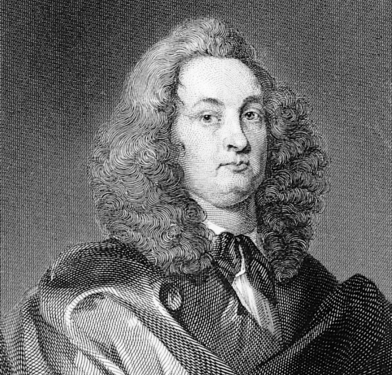 With the King’s patent he opened the Lincoln’s Inn Fields theatre in 1661, in what had been an indoor traditional tennis court. The theatre was the first in England to have a proscenium arch and moveable scenery and was in use for performance until 1733.
With the King’s patent he opened the Lincoln’s Inn Fields theatre in 1661, in what had been an indoor traditional tennis court. The theatre was the first in England to have a proscenium arch and moveable scenery and was in use for performance until 1733.
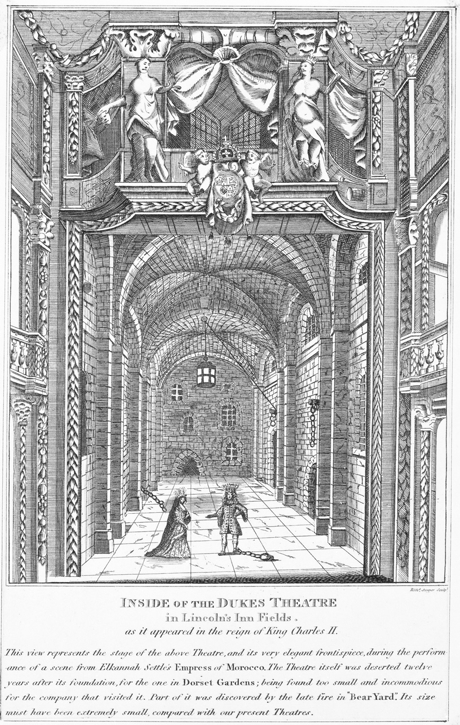
Davenant adapted several Shakespeare plays and was the author of the first English opera, The Siege of Rhodes, which he staged as a revival in his theatre in 1661.
Thomas Killigrew
Killigrew had also practised as a playwright prior to the execution of Charles I and in 1662 he founded Drury Lane Theatre, which is still regarded as one of the finest in England.

Killigrew has been credited with introducing female actors, music and scenery to the stage. He also mounted some of the most significant productions of the period, including revivals of plays by Shakespeare, Beaumont and Fletcher.
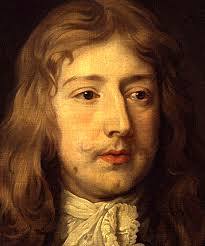 Killigrew wrote several plays himself, the most notable of which was The Parson’s Wedding, written in 1640 and revived at Drury Lane in 1664. It was so risqué that it was said to have ‘made even Mr Pepys blush’.
Killigrew wrote several plays himself, the most notable of which was The Parson’s Wedding, written in 1640 and revived at Drury Lane in 1664. It was so risqué that it was said to have ‘made even Mr Pepys blush’.
More on Samuel Pepys: Samuel Pepys (pronounced Peeps) kept a diary from 1660 to 1669. Written in shorthand, it is a racy and intimate account of his daily life; his many affairs and life in Charles II’s London, including events such as the Fire of London and the Great Plague. He was very fond of the theatre and wrote at length about performers and the plays he had seen.
Killigrew also staged works by contemporary playwrights such as John Dryden and William Wycherley and is regarded as one of the cleverest stage craftsmen of the restoration. Like Davenant, he was keen to experiment with technical innovation.
The actors and actresses
Thomas Betterton
Betterton was an actor-manager and the most famous leading man of his day.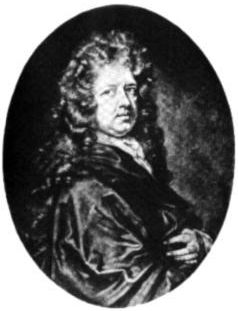
More on Thomas Betterton: Betterton acted in many of the newly opened theatres, making his first stage appearance at the Cockpit in Drury Lane when it re-opened in 1660. He was much admired by Charles II, who sent him to Paris to examine stage improvements there.
Betterton was widely known for his performances in revivals of Elizabethan tragic drama. He married Mary Sanderson, an actress who had made her reputation playing Shakespearean roles and as a couple they were known for their encouragement and training of younger performers. Their foster daughter, Anne Bracegirdle, also became an actress and in time established herself as the ‘virgin actress’ of English theatre.
Betterton was praised for his acting abilities and his beautiful voice and is said to have led a blameless life, in an age which was notorious for extreme behaviour.
The introduction of females on stage
Since classical times, women’s roles in the theatre had been played by young boys, although in Italy the Commedia dell’Arte had broken with this tradition in the mid-sixteenth century by employing professional actresses. One of the most significant innovations in Restoration theatre was the introduction of actresses on the English stage.
Nell Gwynn
Perhaps the most notorious female actor of the Restoration was Nell Gwynn, a member of Killigrew’s company, who also became the mistress of Charles II.
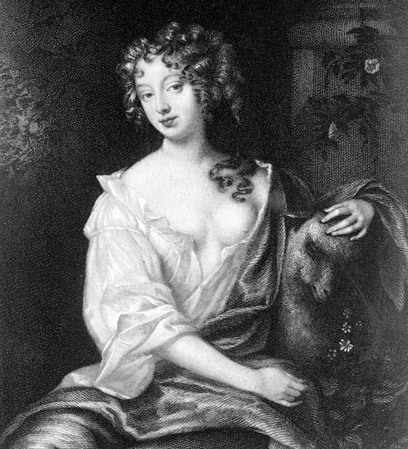
Elizabeth Barry
 Barry was a successful comedienne who created a variety of Restoration comedy heroines throughout her career, but her greatest impact on Restoration drama was as a tragic actress.
Barry was a successful comedienne who created a variety of Restoration comedy heroines throughout her career, but her greatest impact on Restoration drama was as a tragic actress.
More on Elizabeth Barry: Barry was not a beautiful woman but her acting skill and the beauty of her voice ensured that she was always regarded as one of the most accomplished performers of the period.
Barry had affairs with the notorious Earl of Rochester and the playwright George Etherege. She achieved great public approval for her stage performances and was also a successful business woman, which was unusual for the time. She never married and retired from the stage in 1709.
Anne Bracegirdle
As a child, Bracegirdle was placed in the care of the actor Thomas Betterton, who became her guardian and with whom she studied acting. Her first appearance on stage may have been when she was only six years old. As her career developed, she became a leading lady and a favourite of William Congreve, playing the heroine in many of his comedies. Bracegirdle was also a skilled tragic actress, an accomplished singer and enjoyed a reputation for virtue that was quite unusual for actresses of the time.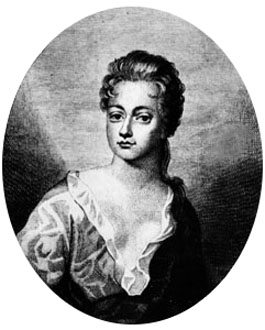
Susanna Mountfort / Verbruggen
Susanna Mountfort was an extremely versatile and popular with audiences in comic parts especially for her breeches roles. Both men and women in the audience loved Verbruggen’s performances in these types of roles and liked to see her impersonating men and enjoying the social and sexual freedom of the male Restoration rake. She married twice. Her first husband, William Mountfort, was murdered in 1692, after which she married the actor John Verbruggen.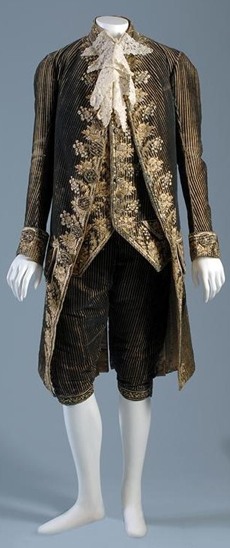
The playwrights
George Etheridge
Etheridge was the first great writer of the Restoration period, writing social comedies of manners that show the influence of Molière.
He was a friend of the notorious Earl of Rochester, whose debauched lifestyle was a model for the Restoration rake. Etheridge was the playwright who set the tone for the great Restoration comedies that followed.
More on comedy of manners: The comedy of manners is:
- a style of comedy that reflects the life, ideals and manners of upper class society in a way that is essentially true to its traditions and philosophy
- The players must maintain the mask of social artifice whilst revealing to the audience what lies behind such manners
- In other words it makes the real artificial and the artificial real.
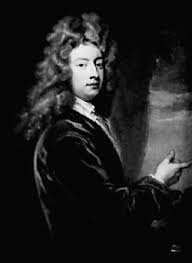 The Man of Mode (1676) is the play that made Etheridge’s reputation. It is a full-blown Restoration comedy and particularly notable for the foppish character, Sir Fopling Flutter.
The Man of Mode (1676) is the play that made Etheridge’s reputation. It is a full-blown Restoration comedy and particularly notable for the foppish character, Sir Fopling Flutter.
William Wycherley
Wycherley trained as a lawyer, but decided to become an actor-manager and writer. This after he began to associate with Etheredge and the Earl of Rochester, who was used as a model for a number of debauched characters in Restoration plays. Wycherley’s work was often very crude and his plays made pointed social comment by portraying the hypocrisy and vices of the period. The Country Wife (1675) was Wycherley’s most famous play and deals with the social ills of the time.
John Dryden
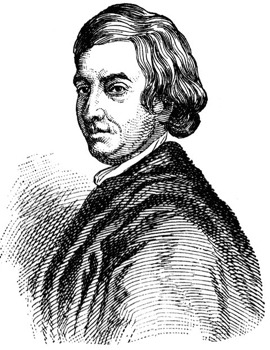 A writer, poet and playwright, Dryden’s heroic tragedies were very different to the work of other Restoration dramatists. In 1668 he was made Poet Laureate and he used his poetry and articles to make strong political points. He also wrote part of an operatic libretto as well as translating and adapting many classical texts. Dryden’s play All for Love (1678) is regarded as one of the great Restoration masterpieces.
A writer, poet and playwright, Dryden’s heroic tragedies were very different to the work of other Restoration dramatists. In 1668 he was made Poet Laureate and he used his poetry and articles to make strong political points. He also wrote part of an operatic libretto as well as translating and adapting many classical texts. Dryden’s play All for Love (1678) is regarded as one of the great Restoration masterpieces.
Aphra Behn
Behn was the first professional woman dramatist. As well as plays, Behn also wrote poetry and novels and is said to have undertaken assignments as a spy.
 She is best known for her topical satirical comedies which display an even handed approach to gender issues. The Rover; or The Banished Cavalier (1677) and its sequel, The Second Part of the Rover (1681), are comedies of intrigue and regarded as examples of Behn’s best work for the stage. Behn wrote eighteen plays, most of them highly successful and each as indecent as any by Wycherley or Vanbrugh.
She is best known for her topical satirical comedies which display an even handed approach to gender issues. The Rover; or The Banished Cavalier (1677) and its sequel, The Second Part of the Rover (1681), are comedies of intrigue and regarded as examples of Behn’s best work for the stage. Behn wrote eighteen plays, most of them highly successful and each as indecent as any by Wycherley or Vanbrugh.
George Farquhar
An Irishman who moved to London in 1697 to write for the English stage, Farquhar’s plays were notable for their warmth and sensitivity, balancing satire with sensibility. Farquhar’s best works are his last two plays, The Recruiting Officer (1706) and The Beaux Stratagem (1707). Bertold Brecht’s Trumpets and Drums and Timberlake Wertenbaker’s Our Country’s Good are twentieth century plays based on The Recruiting Officer.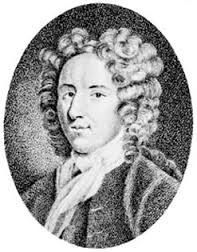
John Vanbrugh
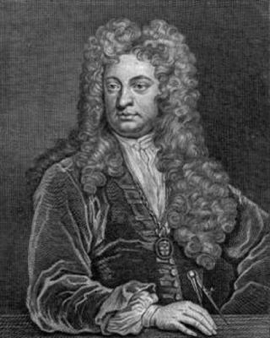 Vanbrugh had several careers; first as a professional soldier, then as a playwright and probably most famously as an architect and surveyor. He designed many important buildings, including Blenheim Palace in Oxfordshire and Castle Howard in Yorkshire. He also designed two theatres in London’s West End.
Vanbrugh had several careers; first as a professional soldier, then as a playwright and probably most famously as an architect and surveyor. He designed many important buildings, including Blenheim Palace in Oxfordshire and Castle Howard in Yorkshire. He also designed two theatres in London’s West End.
Vanbrugh's most successful plays were The Relapse: or Virtue in Danger (1696) a comedy about a libertine and his long-suffering wife, and The Provoked Wife (1697). Both plays were savagely attacked in a critical pamphlet (see below) written by the puritan clergyman Jeremy Collier in 1698.
William Congreve
Celebrated as the greatest writer of Restoration comedies of manners, Congreve was regarded as the master of stage comedy, writing plays that often dealt with marriage and extra marital affairs, perhaps written from his own experiences.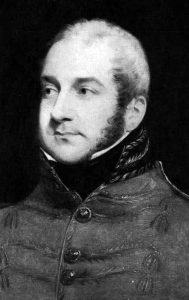
Congreve had affairs with the Duchess of Marlborough, who bore him a child, and also with the actress Anne Bracegirdle, one of his leading ladies.
Congreve’s response to Jeremy Collier’s attack was to write a pamphlet called Amendments of Mr Collier’s False and Imperfect Citations, after which Congreve went on to write his greatest play, The Way of the World (1700).
Reactions to restoration dramas
Collier’s pamphlet
Written in 1698, Jeremy Collier’s critical pamphlet, A Short View of the Immorality and Profaneness of the English Stage, denounced not only Congreve and Vanbrugh, but also Shakespeare and many of the Elizabethan playwrights. Collier objected to the lewdness of the plays, their frequent irreverent allusions to the Bible and biblical characters, and all criticism of the clergy.
 Collier believed that only people of ‘low quality’ should be ridiculed on the stage, since it was an insult to do such a thing to someone who was high born. In his eyes, all playwrights were as immoral and sinful as the characters they wrote about.
Collier believed that only people of ‘low quality’ should be ridiculed on the stage, since it was an insult to do such a thing to someone who was high born. In his eyes, all playwrights were as immoral and sinful as the characters they wrote about.
King James II issued a solemn proclamation ‘against vice and profaneness’ and fines were imposed on some of the most popular writers, actors and actresses. The controversy caused by the pamphlet and the responses made to it went on for years, but the audiences still went to the playhouses and the writers continued to produce plays that satirised and ridiculed their enemies.
The audience
Restoration audiences were members of the upper class of London society (along with their servants). The repertoire of the time reflected the audience's tastes for high-brow humour and wit. Playwrights deliberately structured their works to appeal to an audience whose behaviour in real life was often as shocking as that of the characters on stage. The only conduct in the theatre that was frowned on was anything that could be taken as a verbal attack on the King or his courtiers; everyone else was fair game.
Audiences were quite rowdy in their behaviour during performances. They spoke back to the actors and arranged assignations with one another during the play. Many only attended the theatre in order to socialise and be admired by their friends and acquaintances, rather than to watch what was happening on stage.
By the end of the sixteenth century, with the rise of the merchant class, theatre became more of a commercial activity, attracting a new breed of audience. The nuances of wit and theme so characteristic of the Restoration period were soon replaced with a less intellectually challenging repertoire.
